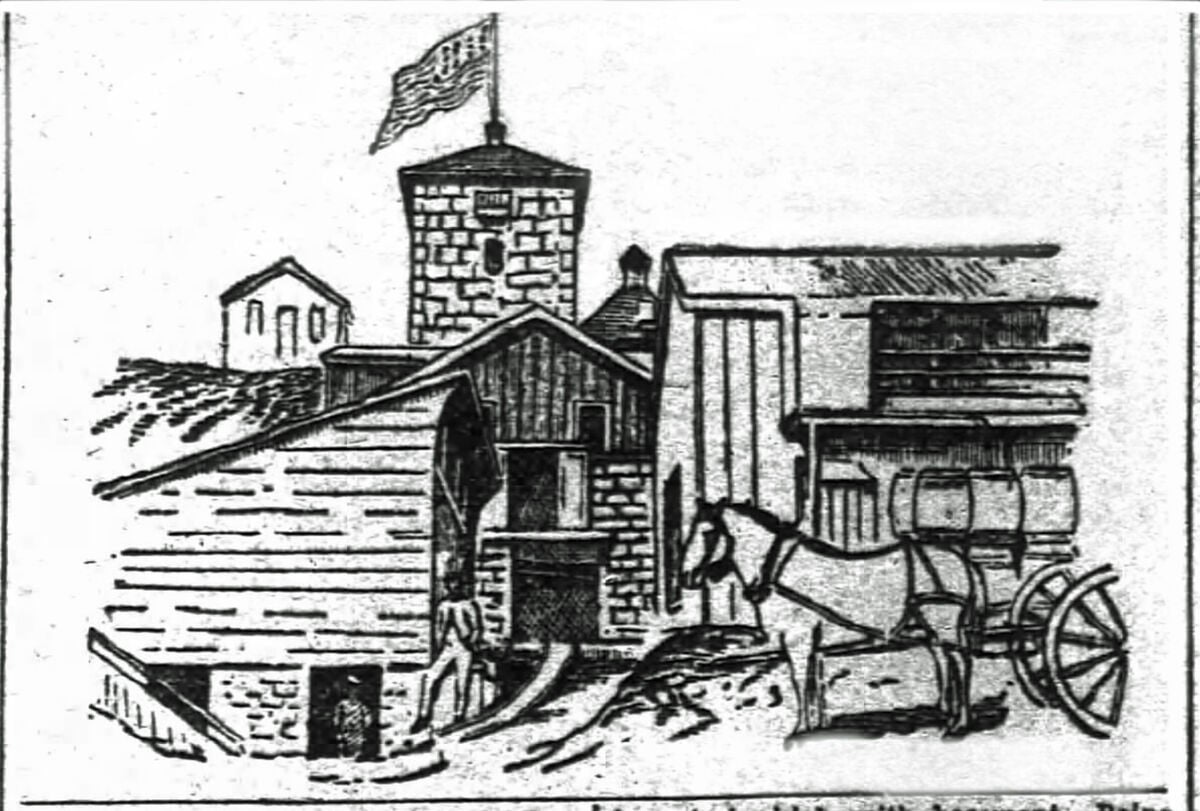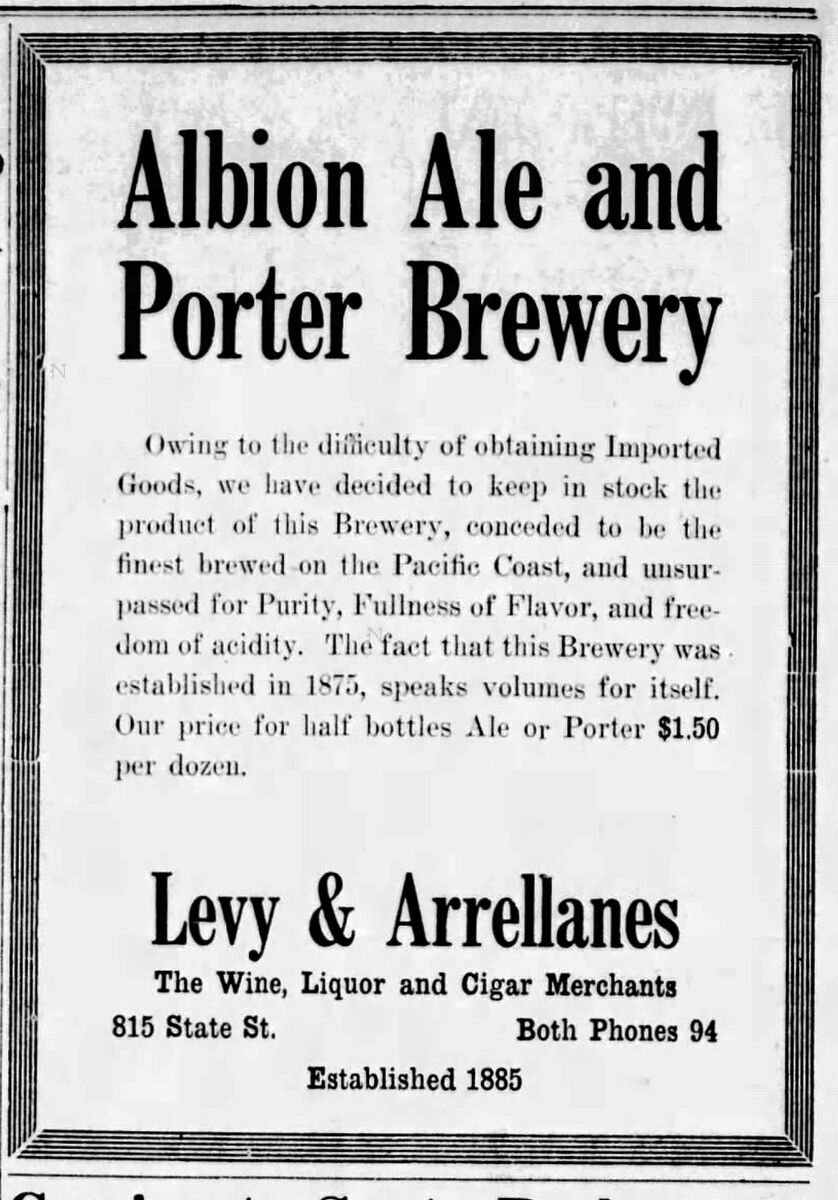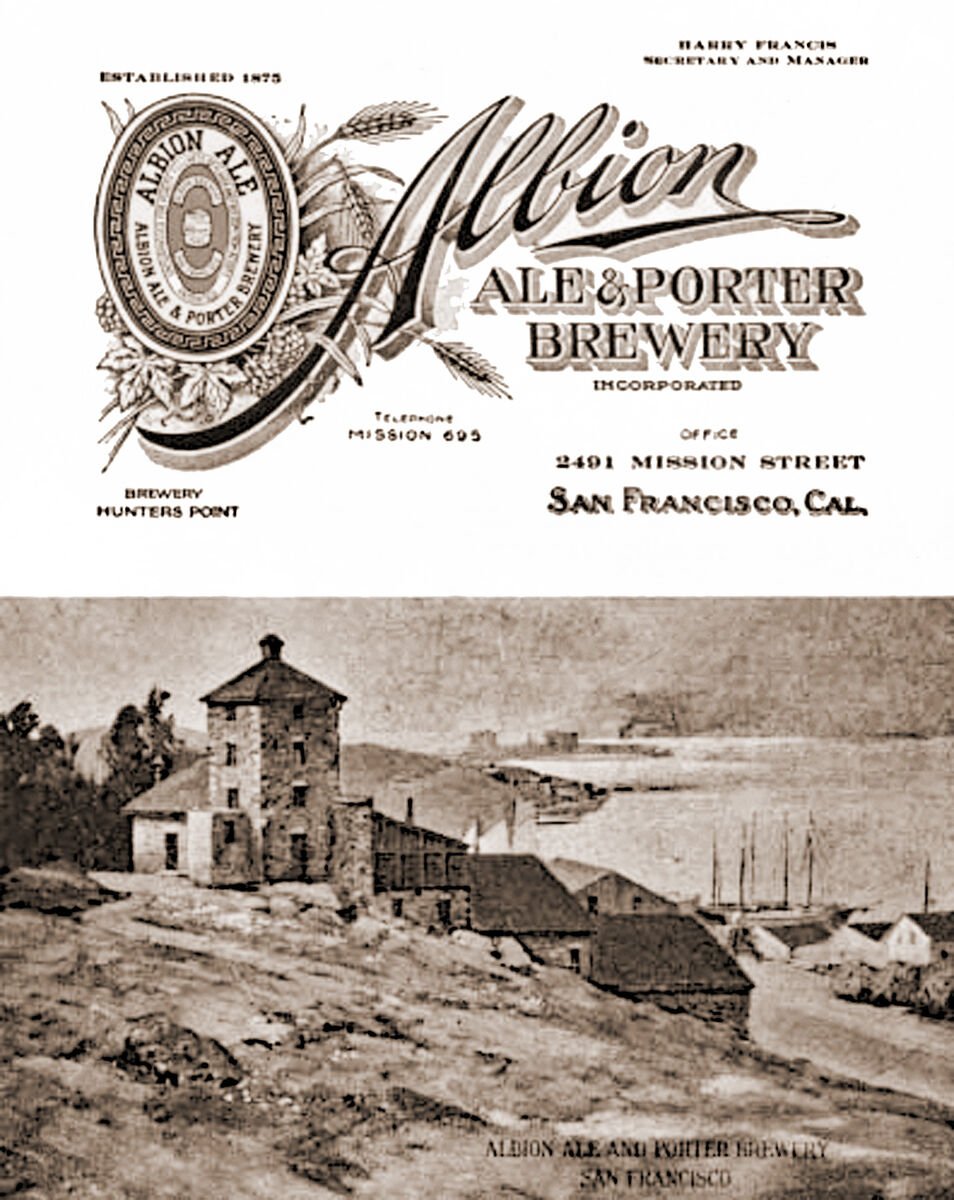Start 14-Day Trial Subscription
*No credit card required

The Inspiration Behind America’s First Craft Brewery
When Jack McAuliffe opened his one-and-a-half-barrel brewery on Eighth Street East in Sonoma, California in the spring of 1977, after the first craft beer start-up in the United States since Prohibition had ended 44 years earlier, he named it New Albion Brewing Co. for two reasons – both of which were rooted in local history. In part, the name commemorated the English hero Sir Francis Drake, who had explored the coast of Northern California 400 years earlier, landing at what is now called Drakes Bay and claiming the region for Queen Elizabeth back in London under the name New Albion. In addition, McAuliffe told a reporter from the Sacramento Bee in October 1977, the name was a nod to the Albion Brewery at Hunters Point in San Francisco, which ran from 1875 to 1919, and which, like McAuliffe's operation, brewed English-style ales, stouts and porters.
Alas, though other pioneering Californian start-ups, such as Sierra Nevada Brewing Co. and Anchor Brewing Co. have thrived and grown, New Albion won prizes for its beers, but eventually crashed to the ground after just five and a half years, unable to make enough money to keep going. McAuliffe has largely stayed below the radar ever since, though he was involved in a couple of small brewing projects with Ken Grossman of Sierra Nevada and Jim Koch of The Boston Beer Company, and he was given an award in 2007 by the Brewers Association.
Meanwhile, perhaps ironically, the 19th-century brewery that helped inspire McAuliffe is still around – or, rather, its almost 150-year-old buildings are, a landmark and attraction in San Francisco known today, because of its strong resemblance to something the Normans might have built, as Albion Castle.

When Jack McAuliffe opened New Albion Brewing Co. in the spring of 1977, he told a reporter from the Sacramento Bee that the name was a nod to the Albion Brewery in San Francisco.
The Albion brewery was started by a 26-year-old Englishman named John Hamlyn Burnell, son of a surgeon, who had studied to be a civil engineer and then switched to brewing, training at the Anglo-Bavarian Brewing Company in Shepton Mallet, Somerset.
At one point in the early-to-mid-1870s Burnell was working as a farmer in Manitoba. He then immigrated to California in 1875, shipping the equipment for an ale and porter brewery direct from England, and established the Albion Brewery that year. (Several sources today claim the brewery was founded in 1870, but a surviving stoneware beer bottle bears a paper label reading "Albion Ale, Estab'd 1875, J. H. Burnell.")
At Hunters Point, then outside the city limits, and supplied by some of the only natural springs in the San Francisco area, he dug out cellars from solid rock, one, at least, being 600 feet long, where the beer was aged. He also built a brewhouse that looked more like a castle than a brewery, made of stone and including a three-story turret.
Before he left England permanently, Burnell married Frances "Fanny" Constable in Lyminster, West Sussex in June 1875: her father, George Sefton Constable, ran the Swallow brewery in Arundel nearby. In California he was initially in partnership with a man named T. H. Simkins, before being joined by a younger brother, Frederick Borrer Burnell. 1882 Burnell & Bro. brewed 665 barrels, putting it 32nd out of 36 breweries in San Francisco.

Albion Brewery's porter was so renowned that they renamed themselves the Albion Ale & Porter Brewery in the late 1880s.
The Albion brewery produced a porter that, according to the San Francisco Chronicle, writing in 1887, was "equal to the Dublin stout," and considerably cheaper, at $1.50 for a dozen bottles, against $2.50 for the imported version. The hops used were shipped from Kent, and the "porter malt"— meaning the roasted "patent" malt — from London, and both the ale and porter were bottled in corked stoneware bottles on the premises. The brewery looks to have been brewing lager by 1889 at the latest: a price list in the Chronicle gives "California Lager Beer" from the Albion Ale and Porter Brewery at $9.50 a 32-gallon barrel, less than half the price of the ale and porter, at $21 a barrel. The porter in bottle was $12 for eight dozen pints.
Burnell's brewery, by now listed as "Albion Ale and Porter Brewery, J. Hamlyn Burnell, proprietor," was described as "an immense success" in a laudatory report in the San Francisco Examiner in October 1890, with the newspaper declaring: "It is only fair to state that Mr Burnell is the only one who has ever successfully produced English ale and porter made on English principles of fermentation in California… The sample of the ale shown the reporter was bright, clear, of good quality and excellent flavor, quite equal to any imported brand and superior to many. This is not to be wondered at, for there is 600 feet of cold vaulting at the brewery in the natural rock, where the ale is aged thoroughly both in wood and in bottle, before it is placed on the market. A special feature is made by Mr. Burnell of supplying families by his wagons, which run regularly through the city."
John Hamlyn Burnell died in December 1890, aged just 41: he was buried in the Masonic Cemetery in San Francisco, leaving an estate worth $12,000, perhaps $350,000 today. The business was carried on by his widow, Fanny, and brother Frederick as Burnell & Company. In 1898 Fanny Burnell's share in the business was bought by William M. Edgell, and the firm continued as Burnell & Co, with Frederick Burnell and Edgell as proprietors.

A review of Albion Brewery's ale from the San Francisco Examiner from 1890 was effusive: The sample of the ale shown the reporter was bright, clear, of good quality and excellent flavor, quite equal to any imported brand and superior to many.
Two years later the company was caught up in a widespread scandal in California when it was one of a dozen local firms charged with faking millions of labels on bottles of stout over a nine-year period to make it look as if they were bottles of Guinness. A court was told that Burnell & Co had been supplied by one printing firm with more than 850,000 labels "so similar to Messrs. Guinness's label that the general appearance of the spurious articles was the same as the general appearance of the genuine article, especially in the hands of an expert barkeeper."
The Albion brewery survived the great San Francisco earthquake of 1906, unlike two-thirds of its rivals in the city, thanks to its position away from the central area of the city. At the time of the earthquake, it was one of only three breweries in the city making porter out of 25. Frederick Burnell died aged 49 in Alameda, across the bay from San Francisco, in December 1907, and the next year the firm became the Albion Ale and Porter Brewery.
World War One was a boost to breweries such as Albion since it removed European competition from the local market. In April 1916, a retailer in Santa Barbara announced that: "Owing to the difficulty of obtaining Imported Goods," it had decided to stock the beers of the Albion Ale and Porter Brewery, "conceded to be the finest brewed on the Pacific Coast, and unsurpassed for Purity, Fullness of Flavor and freedom of acidity. The fact that this Brewery was established in 1875 speaks for itself." The business looks to have been in financial trouble soon after, however, being sued by its bank in 1917, and the company was officially dissolved on November 18, 1920.
However, the brewery building survives, and is now a protected landmark, though the cellars dug into the rock now appear to be filled with water from the springs rather than a superfluity of delectable brews.



